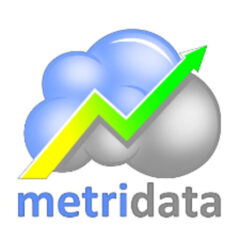Democratize Data
In a nutshell, democratizing data means that the business takes ownership of company data assets. Additionally, various roles will take the lead to determine what the data means and how it is used. This will also make it easier to determine the people who will have access to data they need and when they need it. Of course, security still plays a significant role for many business reasons. People need tools and training to visualize and interact with data to become data literate. They will need to cultivate skills to gain insights from data that can be turned into actions that pay off. Visualization software such as Microsoft’s Power BI, Tableau and many others have emerged to make this a real possibility to democratize data. The learning curve for visualization tools is very small and can help deliver insights almost immediately. With tools like this, the business is able to self-serve most of their data needs which creates additional capacity for your highly paid IT department and BI team members. Democratizing data also eliminates bottlenecks for decision making and empowers your people to achieve company goals. There are many benefits but the most meaningful may be in how it helps to create a truly data-driven culture.
The Black Market of Data
There is no shortage of people that believe data democratization can create more problems than it is worth. The thing is, various forms of data democratization has actually been living underground for years and is still alive and well. See if this sound familiar… Your sales group receives their end of the month report from the reporting team. The butchering begins! This beautiful pristine report is dumped in the meat grinder we call excel. More data is stitched in from manually tracked excel spreadsheets. Custom calculations and formulas are sewn together. Other departments like Marketing and Accounting trade numbers to get their own metrics worked out. like a witch stirring a bubbling cauldron, sales adds a pinch more of this and a pinch more of that. Gurgle-gurgle-pop! A new report is born! All done under the radar, your project managers and BI teams are blissfully unaware who is already actually providing the analytics that is driving the organization.
Some Best Practices
Best practices and perspectives to look for when democratizing your data. There are others but these are some of the heavy hitters.
- Business is in the driver seat and IT rides shotgun. Everyone is in the bus together
- Everyone has access to data that is relevant to each role
- Everyone receives important security training
- Data governance program is alive and well with active participants who have ownership of their data and processes
- Business creates their own visualizations and IT/BI teams support through training and help when needed
- As a general rule, the IT/BI team spends time works 80% on core responsibilities like data models and back end dev. 10% complex reports for business and 10% coaching business on self-service.
Other Thoughts
There is plenty of specifics that would need to be worked through depending on the unique challenges of each organization. This simple blog post is by no means an exhaustive guide but hopefully it provides a general idea of what to shoot for on the journey toward a democratized environment. The important thing to remember here is that the business must play the lead role when it comes to data. After all, they are the ones on the front lines getting it done.

